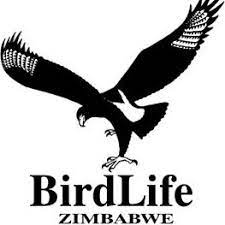IMPORTANT BIRD AREAS
Z020 Limpopo-Mwenezi Pans
UNPROTECTED
GLOBAL IBA (A2)
22°15’S; 31°10’E
c. 70 000 ha
SITE DESCRIPTION
The Limpopo River, which flows from west to east, forms Zimbabwe’s southern border with South Africa. The Mwenezi River, a major tributary, flows north-south. They do not meet in Zimbabwe but are separated by a distance of c. 20 km. The intervening area is Sengwe Communal Land in the Chiredzi District of the Masvingo Province. It mostly consists of a flat, undulating area ranging from 295-305 m a.s.l. The Zimbabwe-Mozambique border is marked by a straight game fence. The three countries meet on the Limpopo River just north of Pafuri, at a point called ‘Crook’s Corner’ (22°25’S; 31°19’E).
The Mwenezi River forms the boundary between Gonarezhou National Park and the Malapati Safari Area, and has formed the Manjinji Pan (a Sanctuary under the Parks and Wild Life Act) from an old ox-bow lake. The pan (22°07’S; 3l°24’E) is located in Communal Land. There is floodplain development downstream of the pan and on the Limpopo River near Chikwarakwara.
The climate is oppressively hot, and frosts are unknown. The average rainfall is c. 400 mm p.a. The natural vegetation away from the pans is Mopane Colophospermum mopane and Terminalia sericea woodland. Manjinji Pan is surrounded by thick fever tree Acacia xanthophloea dominated woodland. There are many Ilala Palms Hyphaene natalensis in the area.
BIRDS
Lemon-breasted Canary Serinus citrinipectus, associated with Ilala Palm savannah, is common in the area. Flocks of hundreds were seen in 1990. Plain-backed Sunbird Anthreptes reichenowi has also been recorded, but it is much rarer than the canary. Cape Vulture Gyps coprotheres fly over the district and is likely that they forage in the vicinity. When full the Manjinji Pan attracts hundreds of waterbirds.
CONSERVATION ISSUES
The area falls entirely with the Communal Land, whose inhabitants practise subsistence agriculture and pastoralism with cattle and goats. The District Council protects the Manjinji Pan, but the local people, who regard the Manjinji Pan as a sacred area, are already in the habit of doing so. The Hyphaene palms are used to make cane furniture and the stems cut to tap sap for wine making. Overexploitation of the palms could threaten the Lemon-breasted Canary. Any general threats to the area are likely to come from over-grazing and trampling by cattle.
Globally threatened
* Cape Vulture – Breeding (pairs) – | Total Numbers – OV
Globally near-threatened
Plain-backed Sunbird – Breeding (pairs) – | Total Numbers – V
RR & BRA | STATUS
Brown-headed Parrot | Common
Plain-backed Sunbird | Rare
Lemon-breasted Canary | Common
* – Species does not meet IBA threshold
RR & BRA – Restricted-range and Biome-restricted Assemblage
V – Vagrant
OV – Occasional visitor
